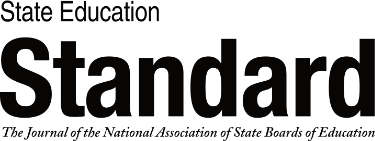While total U.S. public school enrollment has hovered around 50 million since 2000, the percentage of students identified as English learners has grown, from 8.1 percent in 2000 to 10.1 percent in 2017. A subgroup of these students, English learners with disabilities, continues to be one of the most underserved. To monitor and evaluate these students’ progress toward language proficiency and mastery of grade-level content, all staff—not just specialists in English for Speakers of Other Languages (ESOL)—should have a working knowledge of these culturally and linguistically diverse students’ needs.
Supporting English Learners with Disabilities
Also In this Issue
Ensuring Students with Disabilities Leave School Ready to Succeed
By Kristin K. Liu, Martha L. Thurlow and Sheryl S. LazarusState boards can watch policies for red flags that hold students back.
Debunking Myths about Students with Disabilities
By Karla Phillips-KrivickasState policy should confront the pervasive low expectations that the outcomes reveal.
Supporting Students with Disabilities throughout the Year
By Elizabeth Barker and Angela JohnsonThe data point up a need for services that extend beyond the school year.
Reenvisioning the Future with Universal Design for Learning
By James D. BashamBuild a system that supports each student rather than a mythical average one.
Supporting English Learners with Disabilities
By Drew S. Fagan and Luis Javier Pentón HerreraEquitable education means overcoming challenges in identification, staff training, and funding.
Understanding Special Education Teacher Shortages
By David Peyton and Kelly AcostaState policies meaningfully affect recruitment and retention.









 i
i
 i
i